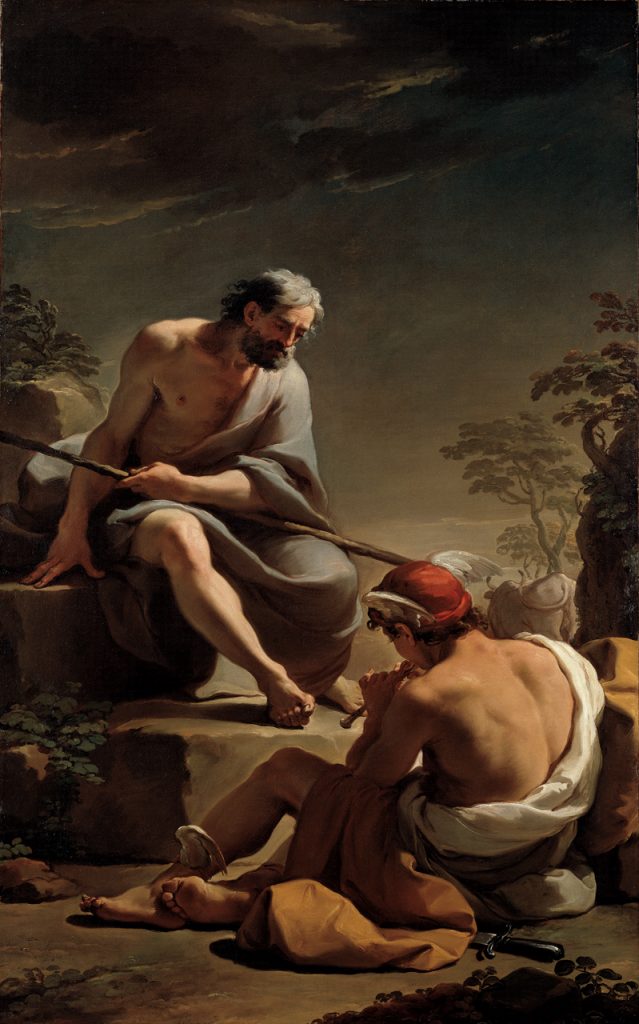Mercury Lulling Argus to Sleep (work of art)
Artwork Info
Key Ideas
- Mercury Lulling Argus to Sleep is part of a series of paintings depicting a classic story from Roman mythology. Argus, the giant who is guarding Jupiter’s mistress, is lulled to sleep and beheaded by Mercury who was sent to rescue her.
- Mercury is the Roman god of commerce, travelers, and trickery. He is identified by his winged cap and winged ankle bracelets.
- Artist Ubaldo Gandolfi was trained in the Bolognese school of painting, in which human figures have body parts that look like those of actual people. In this school of painting, artists often drew from live models.
- Gandolfi introduced an element of humor to his painting by having Mercury gesture directly to the viewer to be quiet, to avoid waking the sleeping giant.
- This painting was commissioned for the palace of the Marescalchi family in Bologna, Italy.
Learn More
Mercury Lulling Argus to Sleep was commissioned by the Marescalchi family for their palace in Bologna, Italy. This painting and Mercury About to Behead Argus are part of a series of six paintings that illustrate classical Roman myths. The two paintings illustrate consecutive moments in the same story. In Mercury Lulling Argus to Sleep, Mercury, wearing a winged cap and winged ankle bracelets, puts Argus to sleep by playing his flute. In Mercury About to Behead Argus, the artist adds a touch of humor by having Mercury gesture to the viewer to be quiet so they do not wake the sleeping giant.
The Gandolfi family, made up of Ubaldo, his brother Gaetano, and his nephew Mauro, were among the last famous painters of the Bolognese school. The school became internationally famous at the end of the 16th century. The Bolognese school of painting focused on realistic depictions of human anatomy and drawing from live models.
The story depicted in these paintings comes from Roman mythology. Io (eye-oh) was a princess who was seduced by Jupiter, king of the gods. To conceal his infidelity from his wife, Juno, Jupiter changed Io into a white heifer (young female cow). Juno was suspicious of Jupiter and asked for the heifer as a gift, a request that Jupiter could not easily refuse. His wife placed the heifer under the guard of Argus, a giant with 100 eyes (whom Gandolfi chose to depict with only two eyes in this painting). Jupiter sent Mercury to rescue Io from Argus. To make the Argus fall asleep, Mercury played music on his flute and then cut off the sleeping giant’s head.
tags: narrative, mythology, communication, identity, power, variation
Additional Resources
Resources for Teachers:
- Learn more about Mercury in the context of ancient Roman religion.
- Read a blog post about the story of Argus, which includes an excerpt of the original story from Ovid’s Metamorphoses.
- Read an article about the Bolognese school of painting.
Resources for Students:
- View a similar painting by a Flemish artist and compare it to Mercury Lulling Argus to Sleep.
- See a photo of the Marescalchi family palace, where this painting was originally commissioned to be displayed.
- Watch a video to learn more about Mercury, the Roman god of speed.

